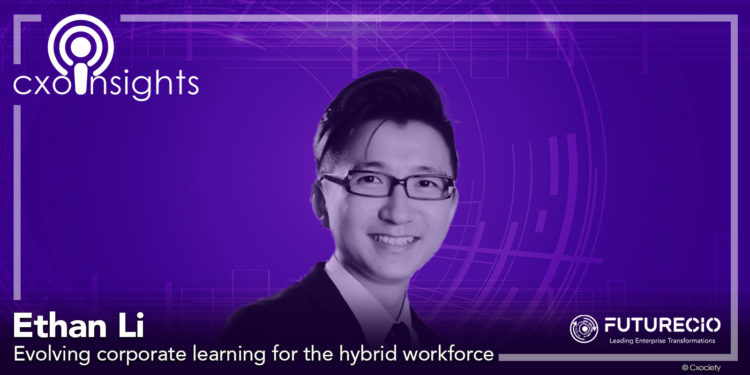The workplace of the digital economy can be described as the convergence of old practices with new technologies, with the winner likely to be influenced by any number of factors including staying ahead of the technology curve.
Gartner says that the “future of work” continues to be synonymous with a remote and hybrid workforce. But while this shift is a seismic change for many organisations, it is only part of the equation.
“Workforce planning — anticipating future talent needs — is at the epicentre of a future of work strategy and is a top priority for HR leaders. But today’s workforce planning is disconnected from reality and current strategies are ineffective at combating the disruptive landscape. Think shifting skills, scarce talent, high turnover, and a shift in the employee-employer dynamic.”
Gartner
According to a YouGov survey, 62% of employees agree that their ability to work from anywhere impacts whether they stay at or leave a job. However, in Cisco Global Hybrid Work Study 2022, only one in four employees feel that their company is ‘very prepared’ for the future of hybrid work. They shared that more needs to be done to embed hybrid work arrangements and reimagine the employee experience.
With Gen Zs and millennials keen on enhancing their skills profile to ready themselves for job opportunities, learning and development (L&D) have become key requisites for organisations to attract and retain top talent. So, what can and how do these corporates retain and grow such talents?
Talent remains a challenge for business, technology and HR leaders in Asia. How should leaders amend their talent management strategies to reflect the realities of their environment in 2023?
Ethan Li, chief strategy officer at MaivenPoint, says a vibrant workforce is important as we shift to a digital knowledge-based economy.
In reflecting on the large amounts of turnover and resignations (since the start of the pandemic), he posited that the top driver of a great working culture are the opportunities to learn and grow, as well as the internal collaborations that people have across business units and departments.
“The financial benefits and perks are no longer the only determining factor for the best workforce and employment opportunities. Employee priorities are shifting towards workplace flexibility and professional development for job satisfaction,” he continued.
Why has this model worked so far? If any, what has not worked?
Ethan Li: One of the main challenges they are having today is comparing attributes of in-person experiences to online learning. The most important part is to ensure that the in-person experience of learning or working is not lost when online.

"Many people have the misconception that online or hybrid work is less engaging and motivating compared to in-person, but often HR experts or leaders are lacking the technical know-how and tools for leveraging the technologies to help them carry on the in-person experience in the virtual environment."
Ethan Li
A reason why HR experts find it challenging to create a strong hybrid environment is because of the amount of time and effort they take to develop.
What mistakes can we learn from the Great Resignation?
Ethan Li: It is integral for leaders to recognize that apart from business operations, learning and development to help employees grow and progress seamlessly in a hybrid environment is critical. This supports other key business priorities, such as attracting and retaining talent.
Additionally, leaders who share their company’s vision and values are more likely to be recommended as a great workplace. Most importantly, leaders need to embrace learning and development as well as diversity in corporate learning development, moving with the ever-changing environment and changing needs in the market.
How do you see hybrid work evolving in 2023?
Ethan Li: When companies are eager to drive learning and development culture and hybrid workplace environments, they need to invest in efficient and holistic technologies to help them.
This provides employees with a seamless experience, whether they are in person or remotely and online, integrating it into their daily workflow. When it comes to corporate learning and development, we want people to feel that they learn where they work and work where they learn.
On top of that, the learning and development should be customisable, so that the employee is maturing their desired skill set that can be leveraged into their job and business outcome goals and essentially. Growing the employees supports the goal of growing a business.
What is your recommendation for leaders to build a positive hybrid work culture?
Ethan Li: Leaders must embrace learning and development. Companies sometimes have this understanding that learning and development are just a value-add to the business and to the employees.
However, with the ever-changing economy and environment, it is becoming more and more important. Leaders can also consider strategically, do they need to send their employees out to courses and lessons, or can they lean on new technologies for a better experience, and integrate that with their daily workflow as well.
Click on the PodChat player for Li’s perspective on the evolving corporate learning for the hybrid workforce.
- What are the key trends of the hybrid work model in 2022?
- Why has this model worked so far? If any, what has not worked?
- What mistakes can we learn from the Great Resignation?
- We are coming into 2023, how do you see hybrid work evolving?
- What is your recommendation for leaders to build a positive hybrid work culture?
- To help our audience understand where you are coming from, what is MaivenPoint?





